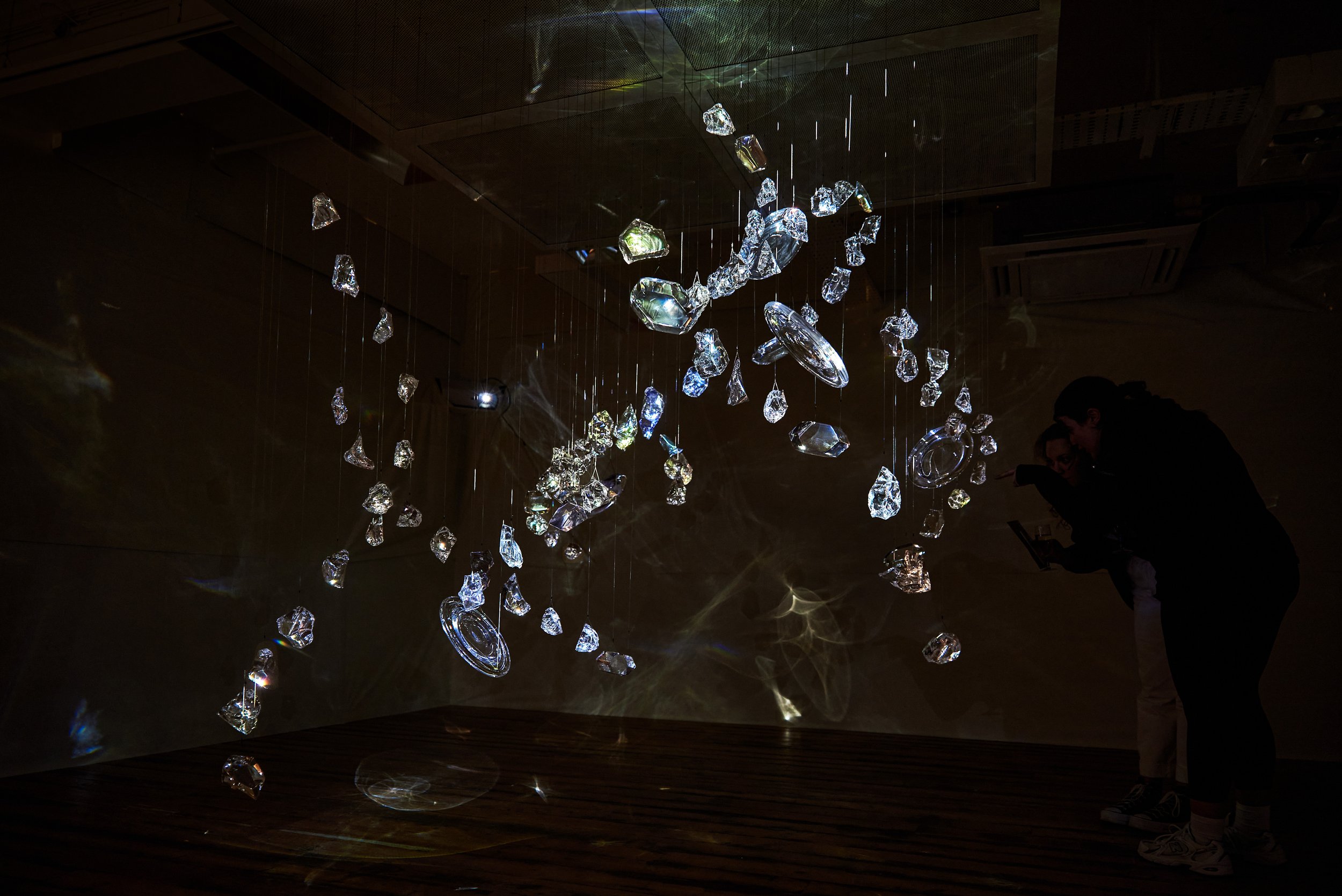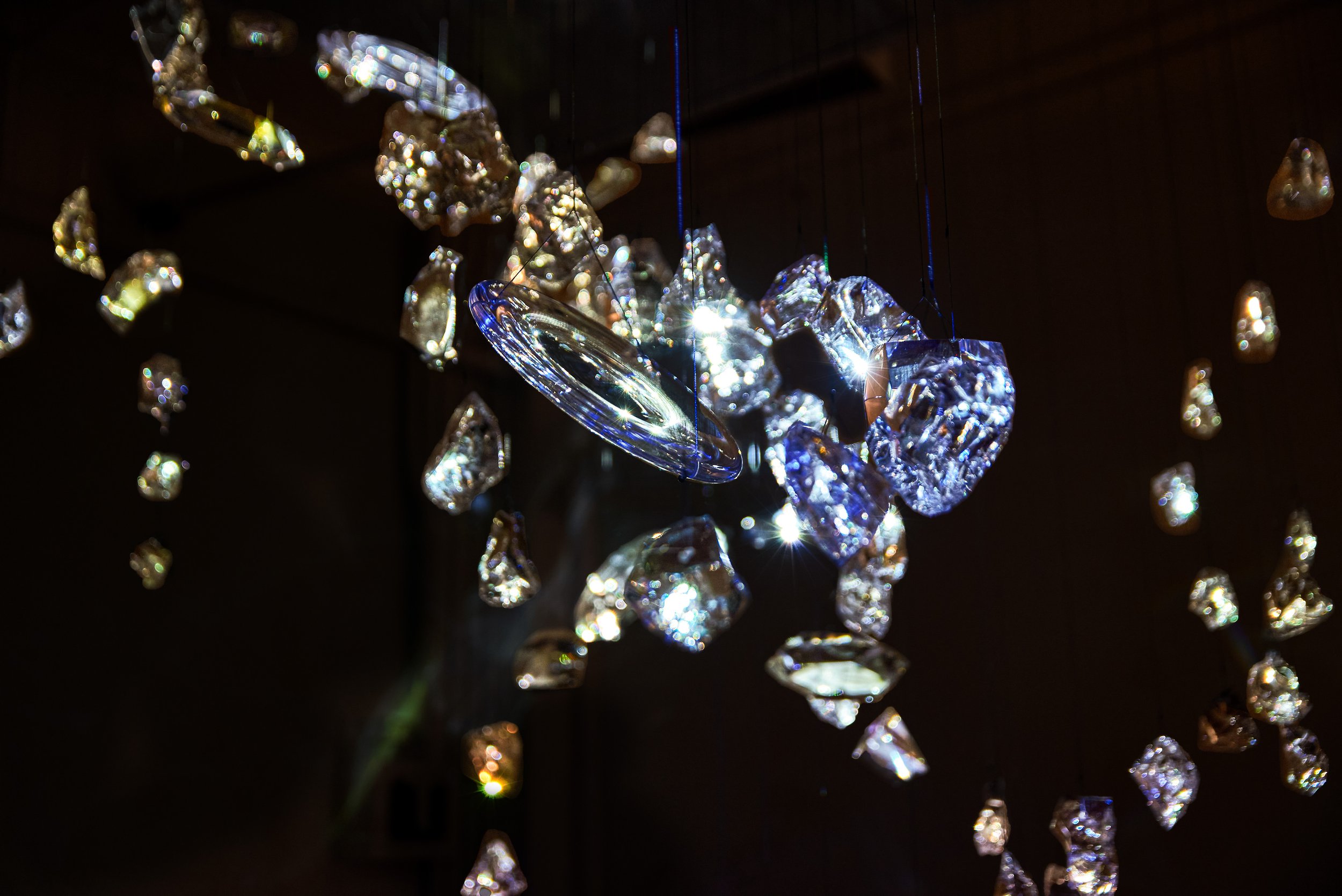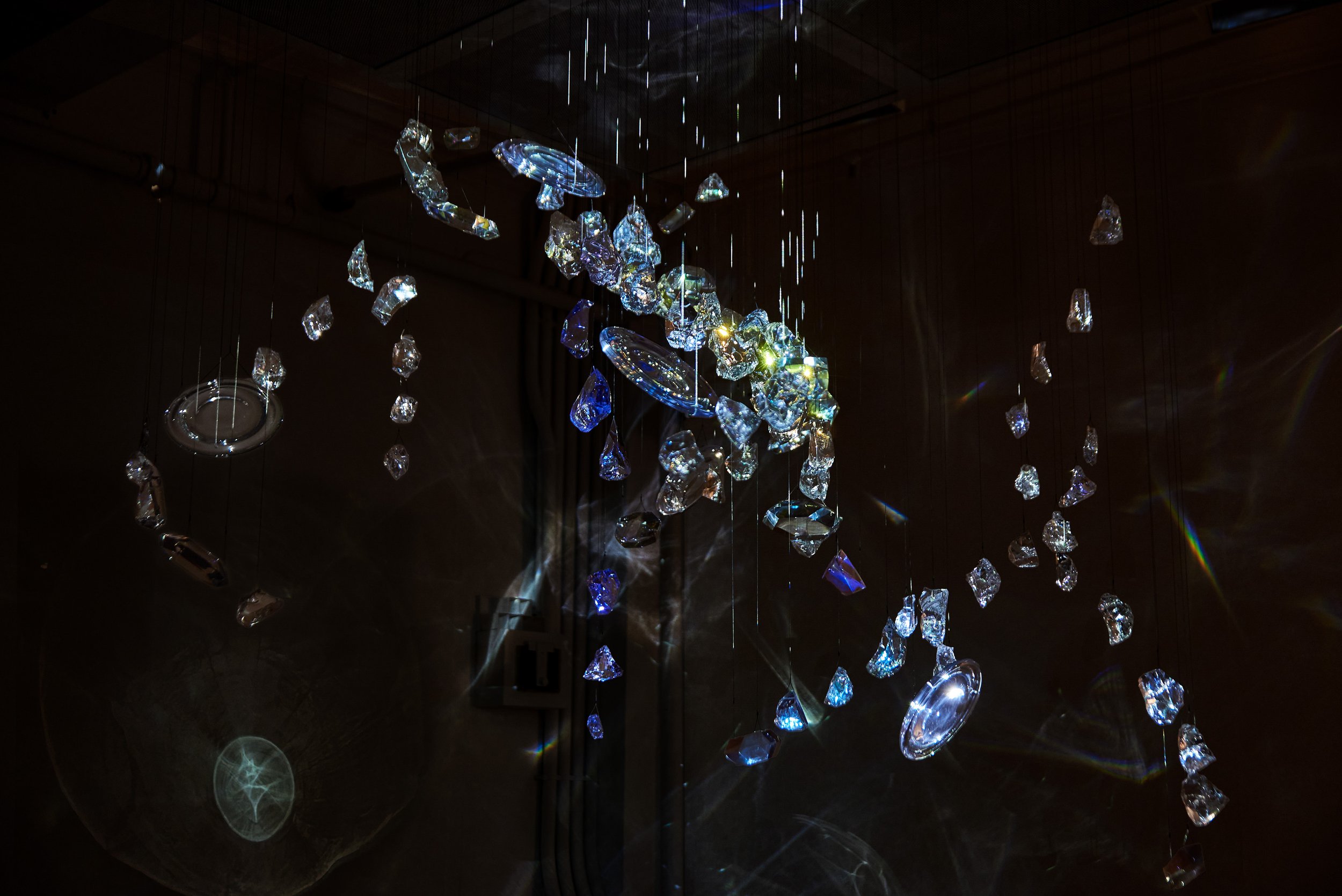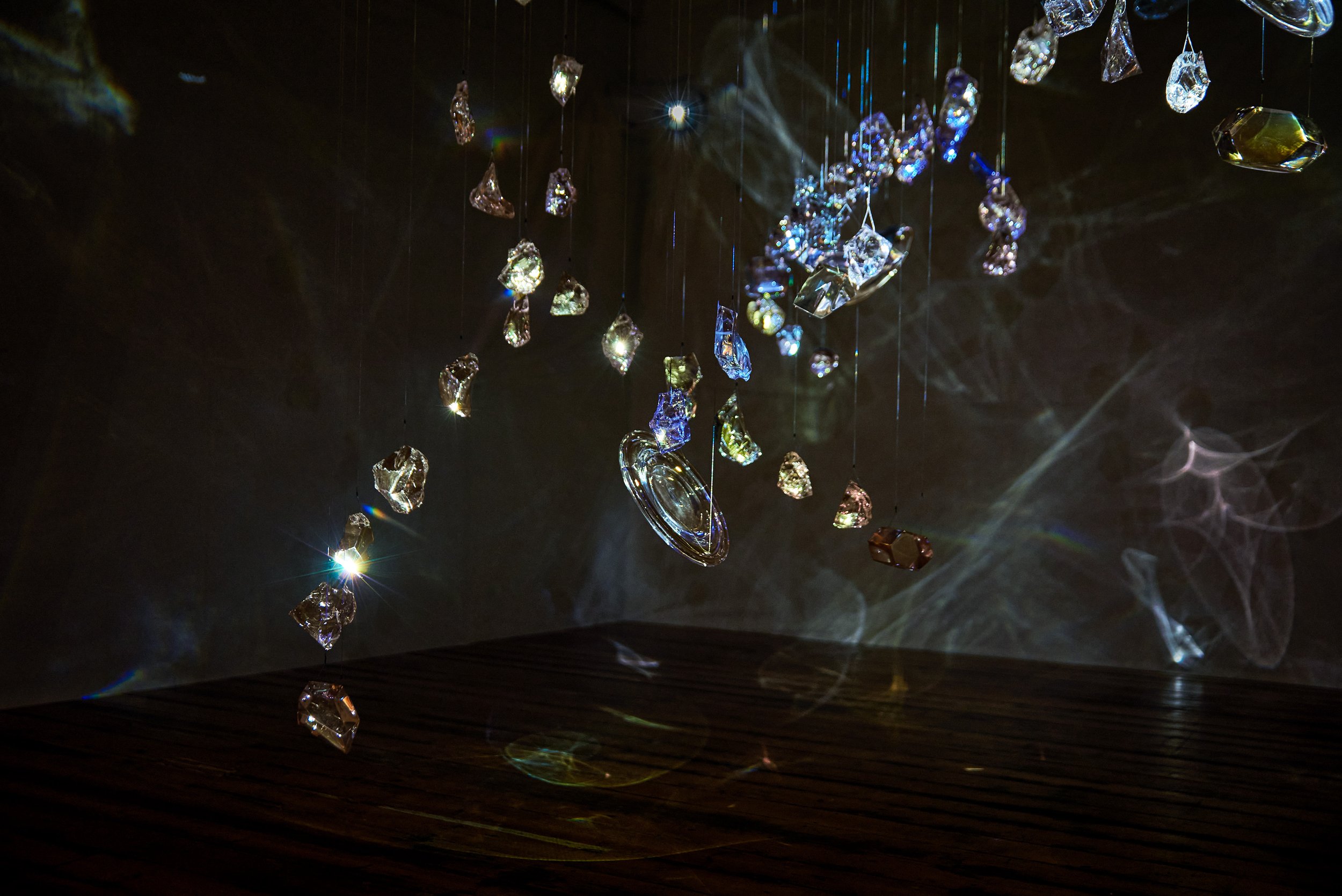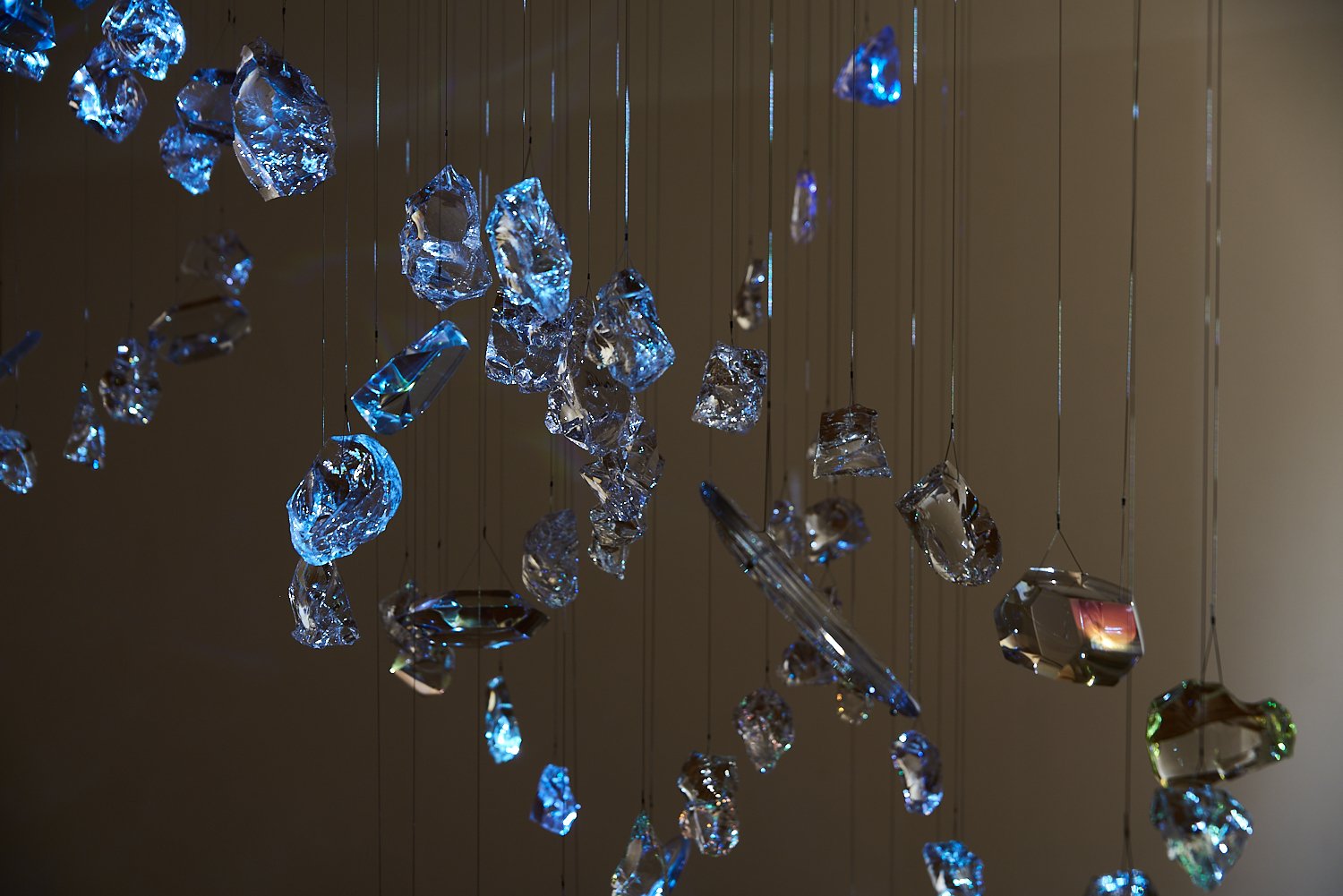Jewel of space
Hand-blown and optically coated glass, kiln-formed, hewn fragments, aluminium, steel cabling, projectors, video. 2023
200cm x 200cm x 200cm
Jewel of Space traces an inner landscape of channels, pathways and luminous sites. The glass elements transmute from hewn chunks to defined prismic geometries and lens forms that interact with projected light to evoke a language of spectral illumination - a cosmological map and the geography of the secret body, manifesting in space.
Jewel of Space was first exhibited as part of ‘Seismic: Art Meets Science’, which invited dialogues between artists and scientists - words by Dr Pippa Cole:
There is a great hierarchy of scales in space. From asteroids, comets, planets and stars, to galaxy disks and their trailing arms, clusters of galaxies, and the monstrous black holes residing at their centres. This diversity is depicted by the shapes of the blown-glass, seemingly suspended in mid-air. Moving through this field gives a sense of the interconnectedness of both inter- and extra-galactic space. The hierarchy of structure formation is depicted by the dispersion of rough fragments, evoking gas and dust, that are guided into well-ordered geometrical shapes. Raw chunks of glass nestle amongst pristine prisms and disks in a conglomeration of angles, all united by paths of light. Whilst these objects appear to hang in the sky, they are in fact all embedded in the fabric of space-time, creating dimples that are proportional in depth to their mass. The larger the object, the larger the well it creates, and the stronger gravitational pull it can exert. This is why, for example, the Earth orbits the Sun rather than the other way around – the Sun’s gravitational pull trumps our own because of its deeper gravitational potential well. This landscape of gravitational potholes and wells diverts the path of everything that passes close by, including light. Gravity bends the paths of the light and causes lensing patterns in the sky. When we observe a far-away galaxy with our telescopes, we often see rings of light or even multiple mirror images instead of the galaxy itself. This is because the light that was travelling towards us from the background has been warped on its journey. In this piece we can see diffraction patterns, intricate threads of light and shadow, and beams of light swept out and away from their hosts. The interplay between the glass and the light are reminiscent of the lensing effects that are caused by nothing but gravity. It reminds us of the intrinsically curved space-time that we live in, to which nothing, not even light, is immune.
Commentary by curator Paul Carey Kent:
Claudia Moseley and Edward Shuster, who have collaborated since 2007, come from contrasting backgrounds in fine art and philosophy - but share a particular interest in how our experiences of reality are framed. Their joint practice creates light-mobiles, sculptural installations and immersive, meditative environments reflecting on the nature of consciousness and technology. Typically those works arise from thinking about both cosmological ideas - how our world comes into being - and also asking how we develop our knowledge of the world. 'Jewel of Space' traces an inner landscape of channels, pathways and luminous sites as the glass elements interact with projected light to evoke what Shuster & Moseley see as a language of spectral illumination - a cosmological map and a geography of a secret body, manifesting in space. Moving through this field gives a sense of the interconnectedness of both inter- and extra-galactic space.

